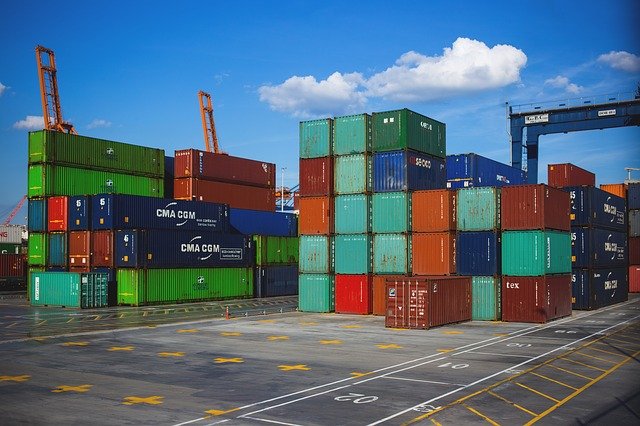The world economy is currently recovering from the pandemic. We are witnessing inflation in prices of goods mainly due to high demand for commodities, protectionist measures, and increased freight rates. The speedy recovery of the world economy that follows the first wave of COVID-19 has made a faster rebound in overseas trade, which was entirely unexpected.
Due to this, a large-scale supply change disruption has been seen in storages which plagued many industries, especially the manufacturing and real estate development sector. Detailed analysis of effects of container storage and high freight rates on reasonable price is well articulated in buildersbook.com. The major contributing factor in this scenario is the longer supply lead time, which caused a surge in input prices.
The critical element regarding container storage and high freight rates that has caused a surge in prices of goods is the increase in demand of goods in post-pandemic time has disrupted the entire supply chain, critically affecting the container storage and high freight rates in inflationary prices of goods. Due to the high volume of goods demand, the container storage capacity of shipping companies is at an all-time high.
As per Mr. Hua Tan, a market analyst at a container shipping company, the current spike in the price of a good is mainly because of the high demand for container freight, which is driven by post-lockdown re-stocking, acute need for protective equipment, and stay home goods, and limited airfreight capacity.
Another highlighted reason for the inadequate container storage is limited alternates. Airfreight companies usually use the space at the belly of a passenger plane to transport goods. As the flights are limited due to COVID-19 restrictions, there is no air freight commercial feasibility available. Lack of alternates, mixed with high demand in consumer goods, has severely affected the goods price.

The world economy is currently recovering from the pandemic. We are witnessing inflation in prices of goods mainly due to high demand for commodities, protectionist measures, and increased freight rates. The speedy recovery of the world economy that follows the first wave of COVID-19 has made a faster rebound in overseas trade, which was entirely unexpected.
Due to this, a large-scale supply change disruption has been seen in storages which plagued many industries, especially the manufacturing and real estate development sector. Detailed analysis of effects of container storage and high freight rates on reasonable price is well articulated in buildersbook.com. The major contributing factor in this scenario is the longer supply lead time, which caused a surge in input prices.
The critical element regarding container storage and high freight rates that has caused a surge in prices of goods is the increase in demand of goods in post-pandemic time has disrupted the entire supply chain, critically affecting the container storage and high freight rates in inflationary prices of goods. Due to the high volume of goods demand, the container storage capacity of shipping companies is at an all-time high.
As per Mr. Hua Tan, a market analyst at a container shipping company, the current spike in the price of a good is mainly because of the high demand for container freight, which is driven by post-lockdown re-stocking, acute need for protective equipment, and stay home goods, and limited airfreight capacity.
Another highlighted reason for the inadequate container storage is limited alternates. Airfreight companies usually use the space at the belly of a passenger plane to transport goods. As the flights are limited due to COVID-19 restrictions, there is no air freight commercial feasibility available. Lack of alternates, mixed with high demand in consumer goods, has severely affected the goods price.
Fluctuating and unprecedented ocean freight rate is also a factor that affects a good’s price. The ocean freight rate is a shipping company’s fee for transporting the freight cargo from one place to another. Therefore, it is essential to understand the ocean freight rates to determine the final shipping cost.
The main reason for fluctuation in freight rates is demand and supply. However, the need for maritime services and the volume of cargo are subjected to various pressures. These pressures may be environmental, political, or economic. For example, global trade imbalance, sanctions, lousy weather, and conflict can affect the demand, affecting the cost.
Other factors that can affect goods prices through freight rates include:
Distance of the exporting and importing destination: It is a simple rule that the shorter the length, the lower will be the freight rate. Even popular destinations have lower freight rates. Less popular destinations with a lower capacity for handling freight are costly.
Cargo type: Freight rate also depends on the types of goods in the cargo. The kind of good that attracts higher fees increases the goods process. The main includes perishable, heavy, dangerous, or out of gauge goods.
Currency: The exchange rate has a significant impact on the cost of goods. As the Ocean fright rate is charged in US Dollars, so every country has a different pace.
Seasons: There are specific seasons in which certain goods are in high demand, for example, Chinese New Year, Eid festival, or Christmas. It is a common phenomenon that whenever demand rises, freight rates and associated costs also prices, and vice versa.
Bunker Fuel: Bunker fuel powers the engine of the ship. Its price highly fluctuates in the international market. Therefore, it is also an essential factor in determining the freight rate.
Environmental laws: After implementing IMO-2020 (new legislation by the International Maritime Org.), the ocean freight rate has been increased.
Vessel size: The vessel’s size and cargo carrying capacity are also crucial with the bunker fuel. Giant ship consumes more power, but they also carry more container.
Economists and maritime experts believe that the impact of the pandemic on the global economy will last till 2022. Once the demand and supply are synced, the cost of cargo, including container storage and freight rates, will reduce. Thus prices of the goods will also plunge.







